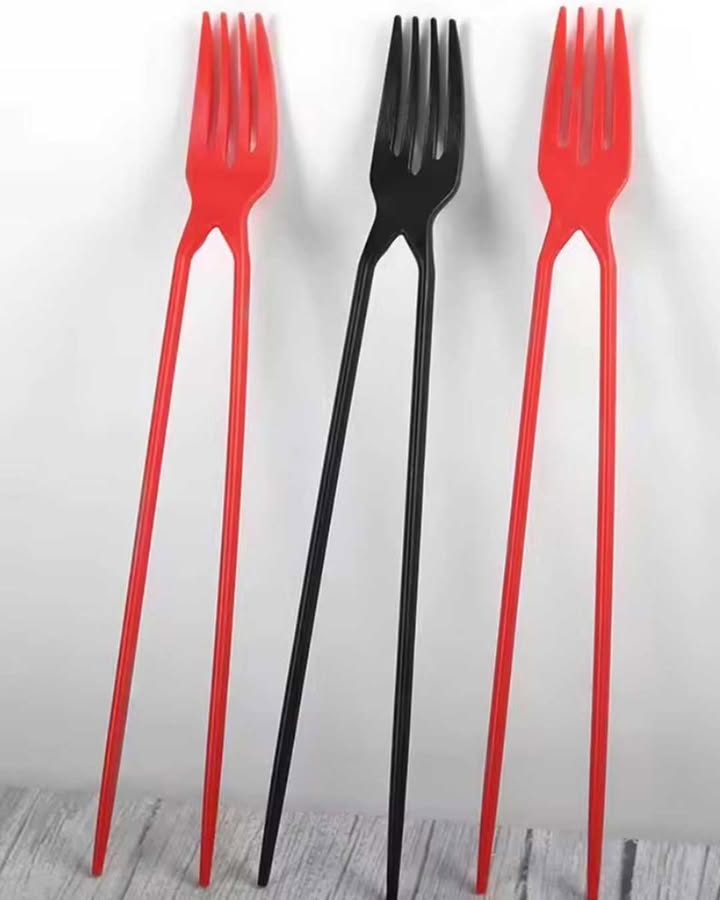What Should I Do With This Gift? Understanding and Using the Chopstick-Fork Combo

Receiving a gift from a friend is always a pleasant surprise, but sometimes, we find ourselves unsure of its purpose or how to use it. That’s exactly how I felt when I was given a unique utensil—a chopstick-fork combo. At first, it seemed like just a novelty item, but as I explored its design and function, I realized it was much more than that.
What Is the Chopstick-Fork Combo?
This hybrid utensil merges the traditional chopstick design with the practicality of a fork, making it a versatile tool for various cuisines. Designed to accommodate both Eastern and Western dining habits, it allows users to enjoy meals seamlessly without switching between utensils. Beyond its convenience, it also introduces an element of fun and cultural fusion to the dining experience.
The Evolution of Training Chopsticks
Training chopsticks originated in East Asia as a tool to help beginners—especially children—develop the skill of using chopsticks. These specialized chopsticks often include loops or connectors to guide finger placement, making it easier to grasp and manipulate food. The chopstick-fork combo builds on this concept, providing the familiarity of a fork while allowing users to practice their chopstick technique at their own pace.
Why Use Training Chopsticks?
The primary goal of training chopsticks is to teach proper hand positioning and technique, helping users build muscle memory and coordination. The chopstick-fork combo serves a similar function, offering a gradual learning experience while ensuring that mealtime remains enjoyable.
How to Use the Chopstick-Fork Combo
Using this utensil is simple and intuitive, especially if you’re new to chopsticks. Here’s a step-by-step guide:
- Hold the utensil in your dominant hand, gripping it as you would a regular fork.
- Use your index and middle fingers to stabilize the chopstick section, keeping it parallel to the fork.
- Try picking up small pieces of food with the chopstick end while relying on the fork as needed.
- As you gain confidence, practice with more challenging foods, improving your chopstick skills over time.
Tips for Mastering Chopsticks
- Start with foods that are easier to pick up, such as sushi, dumplings, or large vegetable pieces.
- Gradually move on to smaller or slippery foods to challenge yourself.
- Practice regularly to develop muscle memory.
- Don’t hesitate to use the fork end when needed—learning should be enjoyable, not frustrating!
The Cultural Significance of Chopsticks
In many Asian cultures, chopsticks symbolize tradition, etiquette, and communal dining. Learning how to use them is often seen as a sign of respect and cultural appreciation. By using the chopstick-fork combo, you’re not just developing a new skill—you’re also embracing a utensil that bridges cultural differences.
Beyond the Dining Table: Creative Uses
This unique utensil isn’t just limited to mealtime. You can get creative with it in various ways:
- Use it as a plant stake for small indoor plants.
- Stir paint or mix ingredients in small batches.
- Introduce it to children as a fun educational tool to learn about different cultures and dining customs.
Final Thoughts: A Thoughtful and Practical Gift
At first glance, the chopstick-fork combo might seem like an unusual gift, but it offers a unique opportunity to expand your dining skills and cultural awareness. Whether you’re using it to practice chopstick techniques, enjoy diverse cuisines, or find creative uses around the house, this utensil is both practical and meaningful. So next time you sit down for a meal, take a moment to appreciate the thoughtfulness behind this gift and the new experiences it brings!